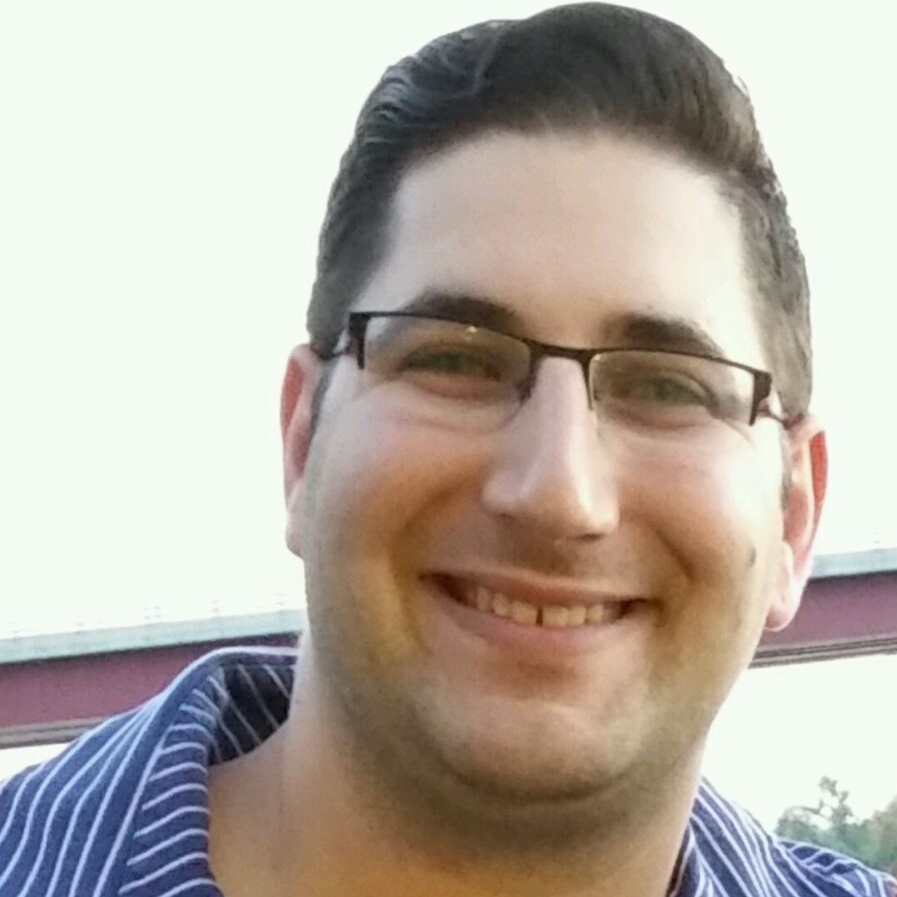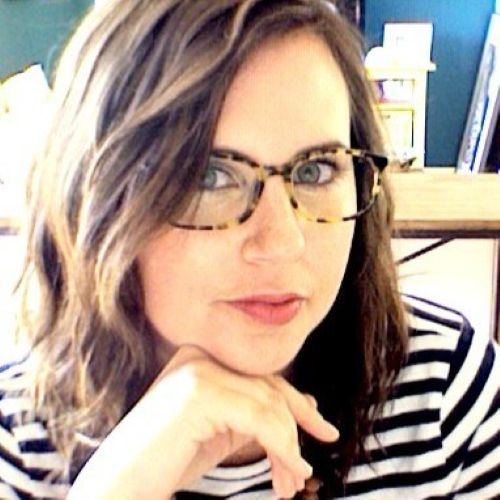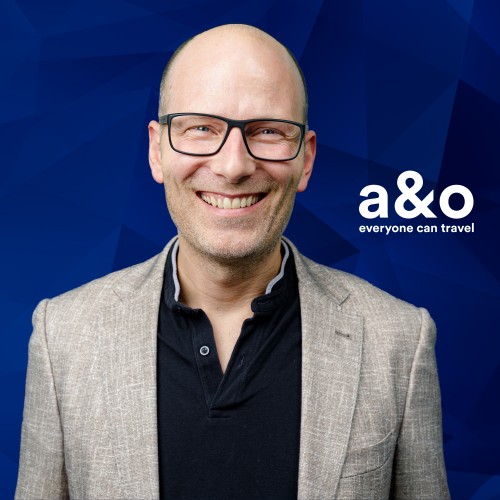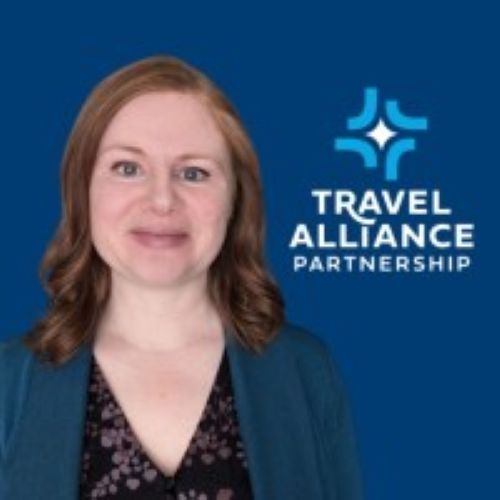Drew Alberti
Episode 41: Preparing for the Future by Building Lasting Partnerships, with Drew Alberti
In this episode, you will learn about making sure your destination has a successful tomorrow by building lasting partnerships today from Drew Alberti.
Drew Alberti has been the Program Manager for Lakes to Locks Passage since 2008. He is responsible for community outreach, product development, and brand awareness. Some of his accomplishments include authoring From Forest to Fields: A History of Agriculture in Champlain Valley, producing the Waterways of War guidebook series and serving as editor for the Lakes to Locks Passage and National Geographic co-branded geo-tourism website. Previous work experience includes Collections Manager at the New York State Museum in Albany and Park Ranger at the Martin Van Buren National Historic Site in Kinderhook. He holds an MA in Public History from the University at Albany.
More on Drew’s Background
Thank you for joining me, Drew.
Thank you so much for having me, Nicole.
I’m really looking forward to your conversation and your perspective, but before we get started, I’d really like to hear a little bit more about your background. I know your bio only says so much, and we’d love to hear it in your own words. Could you tell us a little bit more about your story?
Absolutely. My bio’s a little short because there’s not a whole lot to tell. I’m sort of an open book. I started way back when, and I’ve always been very interested in the hospitality industry. I actually worked in the restaurant industry for about 20 years, just ending a few years ago. I’m very familiar with hospitality, but tourism has been sort of something that I fell into.
I went to college as a business major and didn’t quite like it, but found that I really enjoyed history. I actually majored in European History, and when you graduate with the degree in European History and a minor in Religion, you say to yourself, “Well, what are you going to do with your life with a European History degree?” Particularly since I don’t travel well.
I explored a number of options. I really spoke with a number of different advisors and found that there was a program at the University of Albany geared towards museum sciences and museum studies, the public history program. Through the public history program, I really built the passion for museums. It’s after I graduated that I applied to the Slate Valley Museum in Granville, New York, and I was turned down. When I spoke to Mary Lou Willits, the Director at the time, she said, “No, you were great, but I know somebody who’s hiring, and maybe you would be a good fit for them.” That’s how I found Lakes to Locks Passages back in 2008, just a few months after I graduated, and that’s something that I’d been doing ever since.
Wow, that’s really cool. I love how you found your way into history, but at the same time, are so ingrained in travel and tourism as well, which of course, is what this podcast likes to focus on. I also find it really interesting how everyone’s life journey takes them in different directions, like how you started thinking maybe a business degree and then found your passion over in history. Then from there, you have made your way into this tourism world of travel, tourism, and hospitality. I’m really looking forward to your perspective. Before we dive into the questions as well, could you tell our listeners a little bit about Lakes to Locks Passage and what that organization is all about?
Absolutely. Well, Lakes to Locks Passage is a National Scenic Byway. We hold dual designations as a state and federal scenic byway. In fact, we actually hold a premiere national designation, what’s called an all-American road. There are 150 National Scenic Byways across the United States, but only 32 all-American roads across America. Scenic Byways are designated based on any number of intrinsic qualities. In fact, there are six, and they are history, nature, culture, recreation, scenery, as well as archeological resources. Our designation as an all-American road means that we embrace all of those intrinsic qualities.
When Lakes to Locks Passage was designated in 2002, our Scenic Byway as our designated roadway extended from Waterford, New York at the junctions of Erie and Champlain Canal, and connected all the way through Rouses Point on the Canadian border. We actually cover about 212 miles, not including a scenic loop around Lake George, and then we have a cross border tourism agreement that was passed in 2005. There’s actually a 60-mile extension that goes from Rouses Point all the way through Sorel in Quebec, and that’s managed by a separate organization, but it still shares the same branding and designation.
The Scenic Byway really follows the Hudson River, Lake George, Lake Champlain, and it’s a little about the waterway, that Northern passage, and that’s where we get our tagline, New York’s Great Northeast Journey. Lakes to Locks Passage is a not-for-profit management agency of that designated scenic roadway. That means a lot of different things, but we were really free to create our own organization out of that and what it meant to be a scenic byway. Part of that is community development, community outreach, but really building the experience of what it means to travel the byway.
Wow, that’s really awesome. One of 32 all-American roads, I think that’s a really cool kudos for you to be able to say, and I’m really interested to hear some of your insights on some of these questions. I have other questions I’d like to ask, but I’m going to wait because I think we might get to some of them through our conversation, but I’m really interested to learn more.
Cross-Promoting Destinations
Drew, what we like to do on this podcast is focus in two areas, one on creativity, and one on collaboration. A lot of times it’s hard to talk about one without the other because I find a lot of times, and especially in non-profits and in the tourism and travel industry, collaboration usually comes out of some kind of creative solution to something. I’ve already heard it in your discussion talking about the cross-border agreement, and I know you’ve got some other collaborations you’ll probably cover. I’m just going to dive right into the first question, and that is, thinking about tourism and hospitality, the industry is very competitive. I’m wondering what you have done at Lakes to Locks to stand out from the crowd.
You know, at Lakes to Locks Passage, our goal is really to help build an emotional connection between our visitors and the place that they’ve come to visit. We do that by getting them to really get to know the people and places that they’ve come to see and the places that they’ve come to visit. Our strategy for doing that is a little bit unique, and it starts from the bottom up. We are a grassroots organization, and we really start and pride ourselves on knowing the communities, knowing the people within the communities and their assets, the things there are to see, the things there are to do, particularly their story. What makes their place unique? What makes that place worth visiting?
I like to describe us as a three-legged stool. There are three parts to what we do as an organization. Number one is having round tables and workshops to implement what we call our Heritage Center Strategy. Part of that is gathering the stories, identifying what the destinations are, what the assets are in the community, and more particularly, how those stories connect together. If you are talking about the American Revolution, how do you connect Fort Ticonderoga with the battles of Saratoga in Saratoga National Historical Park? That’s the second part of our three-legged stool, which is the product development, the book, guidebooks, the booklets, the websites, the travel tools that get people to explore the communities through narratives that link our places together.
I learned this a long time ago. I think it’s probably the greatest thing I ever heard, it’s based on what I call the three D’s of tourism, which is to divert, detain, and divest. Our goal is to get people off the beaten route, get them off I-87, get them out of the communities, the larger communities, the larger destinations, and into our smaller communities. We try to get them to spend as much time there as possible, and while they’re there, create an experience that will encourage them to stay longer there by spending more money in each one of our communities.
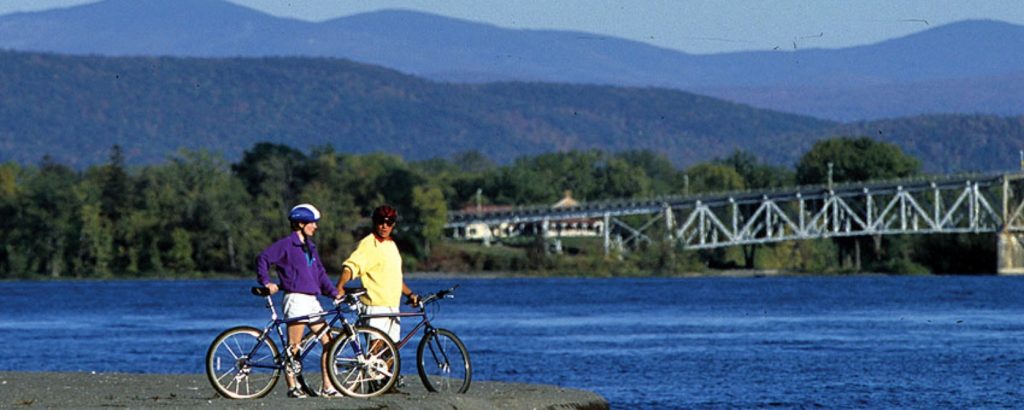
Source: Come Closer to America
[bctt tweet=”“Learn the three D’s of tourism: divert, detain, and divest.” – @LakesToLocks #Podcast”]
The last part is really just making sure we get the brand awareness, and market those product experiences to all of our audience, not only the people who are coming to visit from outside our community, but also the people who live here, who get to know and better understand the communities and the places that they live.
You just gave us so much great information. I have a couple of follow-up questions, but I think it’s really great how focused you are on the three legs of the stool, and very specific in terms of how your organization, what your role is in attracting tourists and visitors into the area that you serve. One of the things that I’d like to hear a little bit more about are those round tables and workshops with your stakeholders. Can you talk a little bit more about how those would work or give us an example of one and who’s at that table?
Sure. We actually have a variety of different round tables and workshops, all based on varying subjects. The underlying goal is to provide sustainability and build a world-class destination for visitors to come to when they find us here. Of course, what’s unique about New York state is that, as you may know, there is a mandate — a New York State law that says that there is required that every village, town, county, even the state has its own historian. In many instances, the role of the town historian is passed on to a Community Historical Society, a little community museum or other repository, which are, what I call the keepers of community culture. These are the places where you go and you can really learn just about anything about a community.
Because these are volunteer-run and there are so many of them, they really need a little bit of help to provide for their sustainability, because they’re all competing for resources, they’re all struggling through how to be sustainable and move forward. Some examples of the workshops that we’ve recently done is grant-writing, how to write a grant. A lot of these small community museums and local organizations are unfamiliar on how to write a grant. We also did one this past year on exhibit building, how to create exhibits, but we’ve also done collections management and things of that sort.
The round tables, on the other hand, are really about us gathering information. The people who are sitting around the table are typically your local historians, the local person, the local what I call “know-it-all,” the person who knows all the little things there are to know about the community, as well as state parks, national parks, really anybody, who is what we would call a stakeholder. The round tables are more geared towards understanding what the stories are and how they fit together. An example of a round table that we did earlier this year, late last year, was on social reform movement. It’s really looking towards our centennial of the Women’s Suffrage Movement and our story, and how that fits into the narrative of our places. We came up with a lot of great stories, Susan B. Anthony’s childhood home here in Greenwich, Solomon Northrop on the underground railroad, the North Country underground railroad museum, as well as the Schuyler Flatts and their discovery of Schuyler slaves, and things of that sort
The round tables are more about understanding the stories and then bringing people together. They understand each other’s stories so that when you go to one destination they can say, “Oh, if you’re interested in this, you can go to this next place and learn about this.” Thereby, again, creating that experience and encourages people to visit multiple destinations and spreading the benefits all the way around through our region.
Wow. That’s a really awesome benefit of the round tables. I love that whole idea of bringing people together, that you’re focusing on a topic and social reform movements. What a great topic. You’re tying into broader messaging or broader interest throughout the state, and then bringing it down to the local level, but then also at the same time, that’s really cool that the people at the round table then learn from each other, and are able to share those messages out as well. We all know when visitors come and they’re perhaps they’re in Rochester at the Susan B. Anthony house not realizing where her childhood home is, but hoping that at the Susan B. Anthony house, they are told about her childhood home, and that they can also go visit there. That whole idea of being able to cross-pollinate and cross-promote each other’s stories is really awesome, what a great approach. Thank you for taking us down that path, that was very insightful.
You’re very welcome.
Boundaries are Imaginary Lines
I want to switch gears just a little bit, still talking about creativity, but one of the things I like to talk to about in this section is a time that there might have been a challenge or some sort of adversity, and I find that creativity really shines through in the face of adversity or a challenge, and we really learn from those experiences. Do you have an experience that your organization may have faced or a challenge, and if so, could you share that and a little bit about what creative solutions came out of that?
Absolutely. Really what I’m gonna do is, I’m gonna go back to your question of what is Lakes to Locks Passage? What is a scenic byway? Because that’s a question I get all the time. It’s a fair question, and our biggest challenge is understanding identity, who we are, as well as what a scenic byway is, and what a scenic byway does. That has really been a very large challenge of ours. We were very blessed for many years that there was a National Scenic Byway Program that was administered by the Federal Highways Administration, and through that program, there were a number of grants that enabled us to do a lot of different and great things. There was also a main office, an organizing factor that brought all 150 scenic byways, as well as 32 All-American roads from across the nation together and help people build that understanding of what traveling a scenic byway was.
That brings me to our challenge, which is that organization, our Federal Highway Grant Program, our America’s Byways Resource Center no longer exists. A number of years ago, it was defunded and our federal resources really went away. When that went away, we really lacked that organizing factor, as well as the opportunity for some of those large dollar grants, that really helped us to do some great things throughout the region, from rebuilding the Slate Valley Museum in Granville to the Thai Heritage Museum or Hudson Crossing Park. That created a huge challenge for us, but we were very fortunate, and I do have to give 100% credit as well as recognition to my boss and my mentor Janet Kennedy, who’s been in this industry for 20, 30 years, and had the foresight to understand that expectation that that money and that resource might go away, and positioning us in such a ways that we could move forward. Particularly moving forward in helping to establish identity, as well as recognition of our brand.
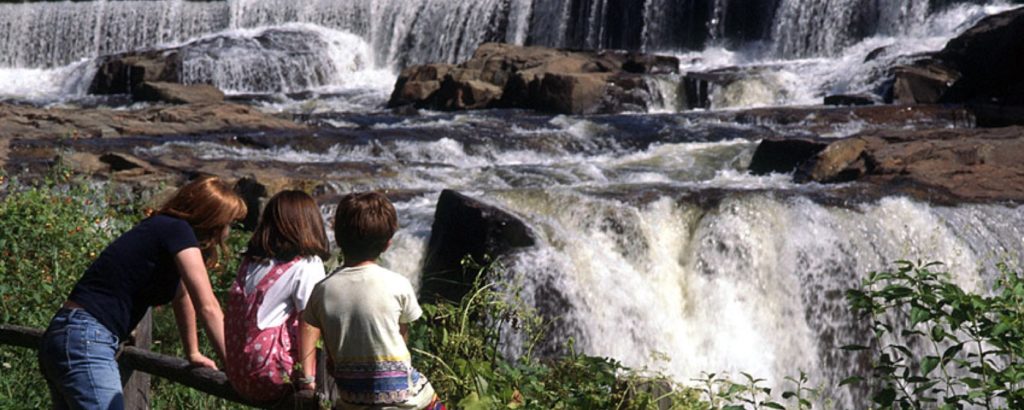
Source: Come Closer to America
[bctt tweet=”“Position your destination to move forward even if funding goes away.” – @LakesToLocks #WhyCollaborate #Podcast”]
One of the major steps that we did to move that forward was our partnership with National Geographic as a, what’s called a geo-tourism destination. By connecting ourselves with the National Geographic brand, it helps reinforce who we are as promoting authentic and distinctive travel opportunities, with a recognized international brand that anybody sees. The yellow box means something to people, perhaps more so than the America’s Byways brand did a number of years ago. While there is still the National Scenic Byway Foundation that does its part to run and strengthen the America’s Byways brand, we also had that ability to overcome that challenge by creating this new opportunity with National Geographic and this program that they created.
Wow, that’s really cool. First of all, I think what a great opportunity that your organization had when the National Highway Program was active for the byways, but then for you and your boss to have that foresight and the ability to find another partner that could continue the work that you’re doing, and relying on a brand like National Geographic, I think that’s just a really awesome example of being creative and I really appreciate you sharing that with us. I hope to learn some more about that National Geographic relationship, maybe we can get to that when we start talking a little bit more about collaboration.
Sure.
But I think that’s really great. I had also thought about a couple of other things as you were talking, and that is how do you work with your local tourism promotion agencies or the regions. In New York State there are the regional heads, and then, of course, I love New York as the state tourism office. How do you intersect in and work with the multiple tourism offices?
Sure. Well, what’s great about our scenic byways is that we are a multi-regional organization, that pays very little mind to regional boundaries. Our ability to overcome regional boundaries is really what our strength is, we’re able to connect narratives rather than recognizing these imaginary lines on a map. We work very closely with our GPAs as far as our regional tourism offices. We actually cross over both the Capital District and the North Country Regions, and then we actually embrace eight and sometimes nine county tourism agencies in county tourism or counties I should say. We work very closely with them. Our goal is really to support them and to help them move forward, by doing things that they may otherwise not be able to do by, again, bringing together these regions together, focus on narratives, and better understanding of these things tied together. Perhaps that’s not the most straightforward answer, but we have great working relationship with our GPAs, as well as our regional tourism organizations. We’re very much able to support them by being a recognized and very forward organization, and connecting destinations together based on narratives rather than these make believe invisible political boundaries.
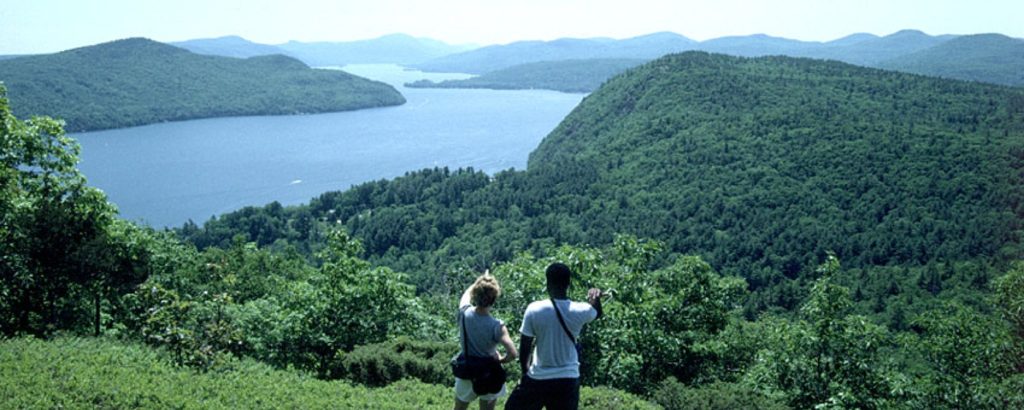
Source: Come Closer to America
[bctt tweet=”“Regional boundaries are just imaginary lines on a map.” – @LakesToLocks #WhyCollaborate #Podcast”]
For sure, and I appreciate that. I mean that’s exactly what I would have expected you to describe because I do see what you offer, and I’m sure our listeners hopefully will be able to go and look at your website, but you have a very comprehensive website. The way you organize things with your trip plans and the places to go, and things to do, I can see how that would complement what those more localized regions or counties are doing in tourism as well. I think that’s just fabulous.
Unguided Guided Tours
Do you have, Drew, any exciting projects coming up in the future that you’d like to share with us?
Absolutely. There is one project in particular or actually a series of projects all based under one thing that I’m very excited about, it’s what we call the PassagePort. The PassagePort actually has its own website called passageport.org, and the PassagePort is, it’s actually what I’ve been describing, which is taking these regional narratives and linking destinations together but doing so in a more comprehensive way. Examples of some of our PassagePorts include the Turning Point Trail or Road to the Battle of Bennington. What it does is it’s a linked audio tour with Google navigation, that takes people through the landscape, and what I call a unguided guided tour experience.
Our communities, in particular, our small communities in Northern New York really don’t have the capacity for tour buses. If I told some of our smaller communities in Washington County that I was bringing a bus load of 50 people to their community, they’re going to say, “Well, that’s great, but where are they going to go? Where are they going to stay? Where are they going to eat?” Because really that’s a lot of people for some of these small communities that may not have the capacity. We’re really focused on small group travel, and this is a great way for people to explore the landscape.
The one that I’m finishing up right now is what’s called our Turning Point Trail. It is a three or four-day tour, that goes between Plattsburgh and Saratoga, really focused on the 1777 Northern campaign of the American Revolution. We also have our complimentary guide book, Waterways of War, Turning Point of the American Revolution, and actually, it’s about four and a half hours of audio, but I remind you that’s meant to be consumed over a course of several days. What it does is it lends the other destinations, as well as non-destinations, places where there’s a story to tell yet not necessarily an organization or perhaps even there is a blue and gold marker on the side of the road, and you have to understand how it adds to the larger narrative.
It’s all really being told through our first person narrators. In this instance, one of our primary narrators is British General John Burgoyne, as well as his lieutenant, William Digney, as well as my personal favorite, the Baroness Riedesel, who had companies her husband, General Baron Riedesel with her three children, the youngest is 10 months old, when she comes to North America to join her husband in this campaign. This is really a great tool for exploring the landscapes. You go to the website, it tells you local places to eat, places where you could stay, it gives you Google navigation to tell you where to go, and then it tells you when you’re supposed to play the audio tracks that are associated with each site.
The Turning Point Trail has 32 stops along the way, some of which again, are major destinations, and there are just places in the landscape where you could really get to know and appreciate the place that you’ve come to visit. It’s all based on our underlying theme, which I think is very profound, which is geography predestines history, and understanding that the landscape impacted the stories that make our place a special place to visit.
Wow, that’s a really cool project. I just pulled up the website as you’re talking, and I think it looks like a really great tool for visitors to really experience. I love how you talked about the unguided guided tour experience, I think that’s fantastic. You know it came to mind as you were speaking, are our international travelers. Do you find that you get a lot of international travelers interested in these types of programs or are you doing anything to attract international travelers?
Yes and no. There are things that will attract international travelers. My experience is that historical narratives, in particular, is not particularly something that is a particular interest in international travelers. They look at our short American history and they say, “You know we’ve got stuff that’s way older, it’s way older and way more interesting,” in Europe or in China or wherever. This is really more geared towards a domestic audience, some international and that of course, there’d be interests from our Canadian neighbors, who do have a part of that story involved. In fact, we tried very hard for Parks Canada to become involved in this project, because of course this is a story that crosses that border, and there are destinations and places that all fit under this narrative. We would love to bring that all together, we just need the partners to do so.
There are other trips that we will be planning that will have more applications for our international audiences outside the history realm. We do have a series of 11 Kayaking Segments, it’s called our Lake Champlain Blueway Trail, that I think is something that would be very attractive to international travelers. It gets them out on Lake Champlain. It gets them to the destinations, and again, learning more about it, but it’s really a more water-based experience for paddlers in particular.
I’m very excited about another narrative that we have coming up, which is the guidebook author Seneca Ray Stoddard in his travels, he does the entire region, but we’re focusing on Lake George. I’ve just been re-reading him and he’s a funny guy, and that makes it a little bit more fun. He has a great sarcasm to him, in his description of places and things, which I think will really resonate particularly in younger audience, who can appreciate that subtle sarcasm, which is so popular among people who are slightly younger than myself.
That’s great. Well, I look forward to seeing that when that comes out.
Building Pride in Place
Switching gears a little bit, the second thing that we like to focus on in our conversations is collaboration. One of the things that I think is so cool about the industry that we work in is what I call co-opetition, where perceived competitors actually come together and cooperate to create something that’s bigger than themselves. Of course, we’ve been talking about it subtly through this whole conversation, because naturally what you’re talking about are several counties, several cities, several communities all kind of working together under this umbrella of your organization in promoting the scenic byway and all of the stories among them. I’m wondering if you have a specific collaboration that you could share with us, that you think was successful and that worked for your organization.
This idea of co-opetition is something that I really like, it’s a little bit of a loaded question because, again, it’s really at the heart of everything we do, is really understanding and getting people to work together and understanding what their place is in the larger narrative. When this process started back in 2002, and I claim no credit over there because I was still an undergrad in 2002 — I tip the hat to my boss Janet Kennedy, as well as our trip planner, Virginia Westbrook, who when we began this process, really was looking for understanding the stories about the place and what their particular place, what makes their place particularly unique, what is it that they have to offer that nobody else has to offer, and defining that what their specific place was.
As Janet tells me, when she started this process she really expected all these communities to say, “Well, you know, America is the place that America is, and we are free Americans today because of what happened here.” We expected people to say that about Saratoga and the battles of Saratoga. We expected people to say that in Ticonderoga and the multiple battles that took place there, and we expected that really we were going to have a lot of sorting to do. We found that actually not to be the case.
When we asked the people in Ticonderoga, “Well, what is it that makes Ticonderoga a special place, that makes it a place unlike any other?” Their answer was, “Well, Ticonderoga means a place between two waters,” meaning Lake George and Lake Champlain, and that’s really something that really gets to the heart of why everything that took place there happened there. Fort Ticonderoga was built there because of the tarry between Lake George and Lake Champlain. The industries that grew up after the American Revolution, the mills that built themselves along the lush river that’s in two lakes happened there, because of the location, the availability of transportation, as well as the availability of water power.
Really, this idea of co-opetition is something that’s really near and dear to what we do, but it also manifests itself in a very different way, and that really is what we’re about, which is helping to build pride in place. Really, any revitalization movement, any economic development movement, any effort to grow our communities and make them better destination is founded on the community having pride in their own community. Well, the people having pride in their own community, and that really goes to … well, if you’re going to invite people over for dinner you’re going to clean up.
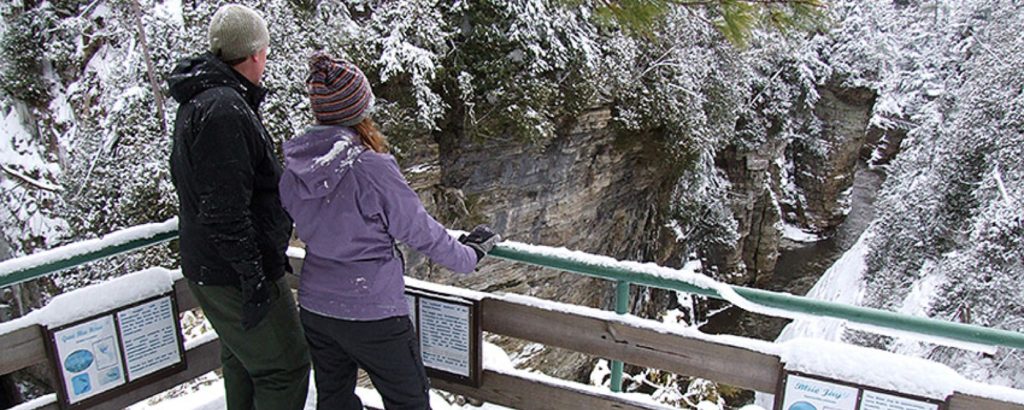
Source: Come Closer to America
[bctt tweet=”“What we’re all about is helping people to build pride in place.” – @LakesToLocks #Podcast”]
It’s the same way with tourism, if you’re going to invite people to come visit your community, part of it is cleaning up, and when that one person cleans up their front lawn and they make their house nice, their neighbor says, “Oh, they made their house look nice, maybe mine doesn’t look so nice. So I need to clean up my house too.” That just makes our communities better places to visit, better places to live, and better places to do business, and that’s really part of the heart of our mission.
That’s really awesome, and helping to build pride in place, I think, is such an important role of organizations like yours, because sometimes it is the locals who have a hard time seeing what’s right in front of them, helping that I think is really awesome.
How to Find Great Partnerships
Can you talk a little bit about where you have looked for in sound, great partnerships that created a win-win? Hopefully, you’re going to talk a little bit about the National Geographic relationship, if you are able to expand on that a little bit.
Absolutely. You know, really we find great partnerships everywhere we go, and the secret to that is really being involved, to be present so to say, chambers meetings, town and county meetings or go to regional organizational meetings, local events, and any time there is a gathering of people in an effort to better their community, to be present and understanding what their needs are. Part of that is through our round tables and workshops, but we really find that the key to finding great partnerships is to be there, and that’s what’s great about a grassroots organization, is that we do have the ability to reach out to the communities. I’m very close to a lot of our local town supervisors and they’re very open about things that they see, the needs within their community, as well as the great opportunities there are to show off these little gems that there are to be there.
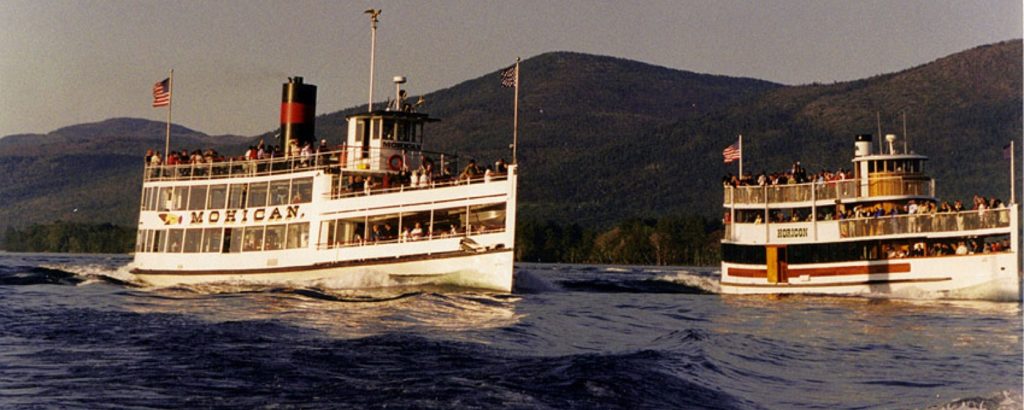
Source: Come Closer to America
[bctt tweet=”“The key to finding great partnerships is to be there.” – @LakesToLocks #WhyCollaborate #Podcast”]
That’s actually how we fell into the National Geographic partnership. It was something that was presented to the National Scenic Byway Foundation, of which my boss, Janet Kennedy is a board member. I’m a committee member. It was just a webinar that basically had this gentleman from National Geographic that said, “You know, National Geographic is all about promoting geo-tourism, sustainable place-based tourism, and our motive is to guide to the places most respected and recommended by locals,” which is a line that I absolutely love, “places most respected and recommended by locals.” It really helped us dovetail with the existing programs, particularly the Scenic Byways, which at that time had already begun to go away.
They created this opportunity for us to work with National Geographic, which really manifests itself in the form of our website, but also some cooperative marketing opportunities. We did have a two-page spread in the National Geographic. We got a little bit of a discount in the number of years to go, because it is very expensive. But again, it all falls back to being involved, being present, understanding what the needs are and coming up with creative solutions to problems, as well as having a formula for success that could help them realize their goals.
That’s just really great advice, being present, being there, being involved, I think is absolutely the way things get done. I think that’s just really awesome. The other thing I would like to hear your perspective on is how you manage expectations in a partnership or in a collaboration. Do you have some advice on how you might set the groundwork for a successful partnership?
You know, all of our partnerships have to be founded on an open and clear dialog, an understanding of what the objectives are. That’s really the foundation for understanding and building strong collaborations is having that dialog, that open and free stage to say, “Yes, maybe this isn’t working, maybe we need to shift gears, maybe there is something that we haven’t visually planned on doing that maybe it doesn’t make sense anymore.” But as long as you have that open and clear dialog, as well as an understanding that you are all going in the same direction, you all hope to achieve the same goals, that’s really critical in building strong partnerships.
When you start holding things back and you hold secrets and that’s when you start running into problems. Managing expectations is really all about understanding what your objectives are in the first place, and your route to getting that, sometimes that route goes awry, about 90% of the time it does. In fact, one of our biggest challenges is that we do work with such a large body of stakeholders that working with some of these people … but so many who people, who each want to leave their fingerprint on it is sometimes very challenging, but at the end of the day, that person who has left their fingerprints on their project now has ownership in it, and that goes back to pride.
We always worry about, particularly when we have outside installations and things like that, about vandalism and other things of that sort, but I tell you, the more the community has ownership of a particular object or whether it be a signage, whether it be a museum or anything or a memorial or anything else, the less that that happens because the community is really looking out for that particular thing. Having that collaboration, understanding and manage expectations, and allowing everybody to put their fingerprints on it, really helps to move things along.
That’s really great advice and a really good point too, having ownership and pride in a project or like you said a memorial or a history museum, whatever it might be, makes a huge, huge difference. I think that’s just a really great point. Drew, I really enjoyed this conversation and you have shared so many really fabulous insights. I’m really intrigued by how your organization has grown up since 2002 and the role that you play. I love the whole idea of the narratives and really tying all of these stories together, and I just think that’s a really valuable asset that you provide to the regions and the area that your organization serves. Before we kind of sign off, are there any final thoughts or any other things that you’d like to share that maybe we haven’t covered yet?
I’d just encourage all your listeners to please go out and check out our website, lakestolocks.org. Please go and check out our new website passageport.org. We’re very proud of the PassagePort and it’s still a work in progress, so please bear with us as we move that forward. Please be in touch and like I said, the key to all our partnerships is being involved, being persistent. Please, if you are local or you’re in the region, please keep us in mind, look us up, be in touch.
Absolutely, and I think that’s a great way to end. Thank you very much for joining me today, Drew, and we look forward to talking to you again.
Thank you so much for this opportunity to speak to you and all your listeners, Nicole.
We value your thoughts and feedback and would love to hear from you. Leave us a review on your favorite streaming platform to let us know what you want to hear more of. Here is a quick tutorial on how to leave us a rating and review on iTunes!
